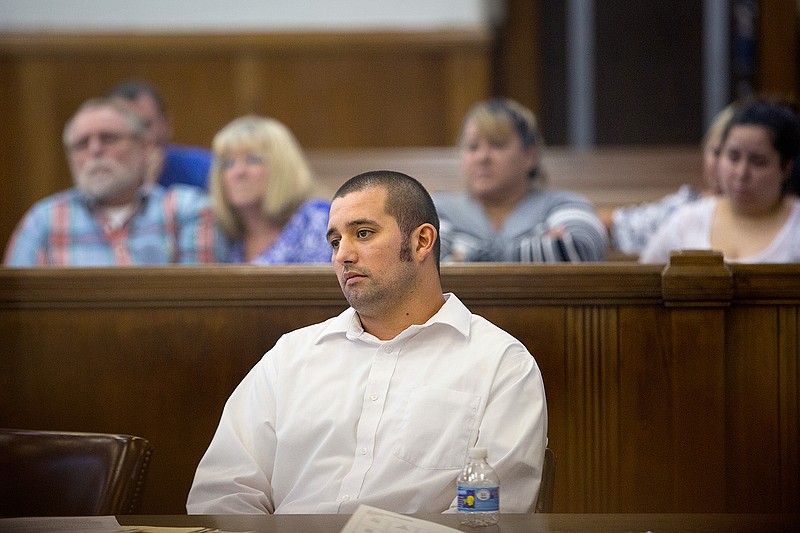A Miller County jury convicted a man of manslaughter Thursday who threw a punch at the Electric Cowboy nightclub in 2015 that led to another man's fatal brain injury.
The jury of nine men and three women assessed the maximum $10,000 fine for Taylor Caz Rogers, 27, in the death of Jon Paul "J.P." Russell but did not order any prison time. Rogers left Miller County Courthouse in debt, with a felony conviction, but free.
Russell, 32, struck his head on a table and a concrete floor after being punched by Rogers in the early hours of Aug. 29, 2015, at the now shuttered Electric Cowboy club in Texarkana, Ark.
Rogers, represented by Ashdown, Ark., lawyer Mickey Buchanan, testified Thursday that he was "scared" when Russell, who stood about 6 feet and weighed approximately 180 pounds, engaged his friend, Taylor Rosen, in a verbal exchange over a woman. Rogers contradicted the testimony of several witnesses who worked in the club as bouncers when he claimed the security staff were too far away to be of much help to Rosen, who is approximately 5 foot 7 inches. Under questioning from Buchanan, Rogers claimed Russell had taken a swing at either he or his friend and was compelled to react. Bouncers who were close to the situation testified Russell was verbally confrontational but never moved to throw a punch.
Deputy Prosecuting Attorney Kristian Robertson grilled Rogers during cross examination, pointing out inconsistencies between his testimony Thursday and statements he made during an interview Sept. 3, 2015, with Texarkana, Ark., Police Detective Paul Nall which was videotaped and played for the jury at trial.
"You injected yourself in a situation you acknowledge had the attention of four bouncers. You put yourself in that situation unnecessarily didn't you," Robertson pressed Rogers. "You attacked him didn't you?"
Witnesses at trial testified that bouncer Lennon Davis had the situation under control while three other bouncers were at the ready when Rogers threw a punch over Davis' shoulder, striking Russell in the jaw.
Texarkana neurosurgeon Marc Smith testified Thursday that a substantial skull fracture near Russell's brain stem left him with a "very poor prognosis." Smith said Russell's injuries were consistent with someone being knocked out as they stood and falling, striking their unsupported head on a hard object. Russell's family, a large number of whom sat through Rogers' trial at the Miller County courthouse, made the difficult decision to discontinue life support about two weeks after Russell suffered the traumatic brain injury. Smith testified that he would have made the same choice had it been a member of his own family.
Deputy Prosecuting Attorney Connie Mitchell argued that Rogers' decision to turn a verbal altercation between two men which was being mediated by someone trained to handle just such situations proved deadly.
"Boys, booze and women. Like I said, never a good combination," Mitchell told the jury in closing remarks. "That's why clubs like the Electric Cowboy have floor security. If Taylor Rogers had just let them do their jobs that night, Jon Paul Russell would still be alive."
Mitchell described the loss to Russell's family as "tragic and unnecessary."
"I hope this case serves as an example of what can happen when punches are thrown when one can just as easily walk away," Mitchell said. "It takes a bigger, better man to avoid physical confrontation."

